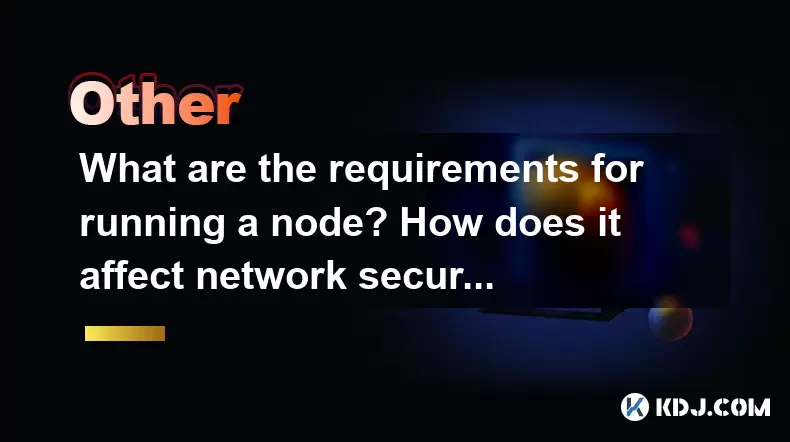-
 Bitcoin
Bitcoin $115200
-2.68% -
 Ethereum
Ethereum $3601
-5.16% -
 XRP
XRP $3.035
-2.96% -
 Tether USDt
Tether USDt $0.9997
-0.04% -
 BNB
BNB $764.5
-5.43% -
 Solana
Solana $168.1
-5.92% -
 USDC
USDC $0.9998
-0.02% -
 Dogecoin
Dogecoin $0.2090
-4.80% -
 TRON
TRON $0.3272
-0.49% -
 Cardano
Cardano $0.7306
-5.00% -
 Hyperliquid
Hyperliquid $39.16
-12.22% -
 Stellar
Stellar $0.3967
-4.96% -
 Sui
Sui $3.566
-5.95% -
 Chainlink
Chainlink $16.55
-6.57% -
 Bitcoin Cash
Bitcoin Cash $552.3
-3.90% -
 Hedera
Hedera $0.2516
-4.69% -
 Avalanche
Avalanche $21.99
-5.75% -
 Toncoin
Toncoin $3.621
-0.28% -
 Ethena USDe
Ethena USDe $1.000
-0.03% -
 UNUS SED LEO
UNUS SED LEO $8.951
0.02% -
 Litecoin
Litecoin $105.9
-3.59% -
 Shiba Inu
Shiba Inu $0.00001232
-5.00% -
 Polkadot
Polkadot $3.640
-5.55% -
 Uniswap
Uniswap $9.048
-7.03% -
 Monero
Monero $301.8
-1.51% -
 Dai
Dai $0.9999
-0.01% -
 Bitget Token
Bitget Token $4.334
-3.66% -
 Pepe
Pepe $0.00001064
-6.17% -
 Cronos
Cronos $0.1367
-5.78% -
 Aave
Aave $259.2
-4.59%
What are the requirements for running a node? How does it affect network security?
Running a node on a blockchain requires robust hardware, updated software, and a stable internet connection to validate transactions and enhance network security.
May 17, 2025 at 03:35 am

Running a node on a blockchain network is a critical activity that supports the decentralized nature of cryptocurrencies. Nodes are essentially computers that maintain a copy of the blockchain and validate transactions, ensuring the integrity and security of the network. To understand the requirements for running a node and how it impacts network security, let's delve into the specifics.
Hardware Requirements for Running a Node
To run a node effectively, you need to ensure your hardware meets certain standards. The minimum hardware requirements typically include a reliable computer with a decent processor, ample storage, and sufficient RAM. For most blockchain networks, a multi-core processor, at least 8GB of RAM, and a terabyte of storage are recommended. This ensures that the node can handle the continuous data processing and storage demands of the blockchain.
Storage is particularly crucial because the blockchain grows over time. As new blocks are added, the size of the blockchain increases, requiring more storage space. For example, the Bitcoin blockchain currently requires over 300GB of storage, and this number will only grow. Therefore, using an SSD (Solid State Drive) can significantly improve the performance of your node due to faster read and write speeds.
Software Requirements for Running a Node
In addition to hardware, you need the appropriate software to run a node. The core software for most blockchain networks is open-source and can be downloaded from the official repository of the cryptocurrency. For instance, to run a Bitcoin node, you would download Bitcoin Core. The installation process involves downloading the software, setting it up on your computer, and configuring it according to the network's specifications.
Keeping the software updated is essential for maintaining the security and efficiency of your node. Blockchain networks often release updates to improve performance, fix bugs, and enhance security features. Regularly updating your node software ensures that it remains compatible with the latest network protocols and can handle new features and improvements.
Network Requirements for Running a Node
A stable and fast internet connection is another critical requirement for running a node. Nodes need to be online continuously to validate transactions and relay information across the network. A minimum upload and download speed of 10 Mbps is recommended, but higher speeds can improve the performance of your node. Additionally, having a reliable power supply and backup internet connection can prevent downtime, which is crucial for maintaining the node's effectiveness.
Network security is also a concern when running a node. Since nodes are constantly communicating with other nodes on the network, they can be potential targets for cyberattacks. Implementing firewalls, using secure connections, and regularly monitoring network traffic can help protect your node from malicious activities.
The Impact of Running a Node on Network Security
Running a node contributes significantly to the security of the blockchain network. Nodes play a vital role in verifying and relaying transactions, ensuring that only valid transactions are added to the blockchain. The more nodes there are on a network, the more decentralized and secure it becomes. This is because a larger number of nodes makes it more difficult for any single entity to control the network or manipulate transactions.
Nodes also help prevent double-spending, a common concern in cryptocurrency transactions. By validating each transaction against the entire history of the blockchain, nodes ensure that the same coins are not spent twice. This validation process is crucial for maintaining the trust and integrity of the network.
The Role of Full Nodes vs. Light Nodes
There are different types of nodes, and their impact on network security varies. Full nodes store the entire blockchain and validate all transactions, making them crucial for the network's security. They ensure that the rules of the blockchain are enforced and that all transactions comply with these rules. Running a full node requires more resources but provides the highest level of security and decentralization.
On the other hand, light nodes (also known as SPV or Simplified Payment Verification nodes) store only a subset of the blockchain data. They rely on full nodes for transaction validation and are less resource-intensive. While light nodes are useful for mobile devices and users with limited resources, they contribute less to the overall security of the network compared to full nodes.
The Importance of Node Distribution
The geographical distribution of nodes is another factor that affects network security. A well-distributed network of nodes across different regions and jurisdictions can enhance the resilience of the blockchain. If nodes are concentrated in a single area, it could be vulnerable to regional disruptions or regulatory actions. A diverse and widespread node network helps ensure that the blockchain remains operational and secure under various conditions.
Steps to Set Up a Node
Setting up a node involves several steps, and the process can vary slightly depending on the specific blockchain network. Here is a general guide to setting up a Bitcoin node:
- Download the Bitcoin Core software from the official Bitcoin website.
- Install the software on your computer, following the instructions provided in the installation guide.
- Configure the node by editing the configuration file (bitcoin.conf) to set parameters such as data directory, network port, and any other preferences.
- Start the node and let it synchronize with the blockchain. This process can take several days, depending on your internet speed and the size of the blockchain.
- Verify that the node is operational by checking its status and ensuring it is connected to the network.
Frequently Asked Questions
Q: Can I run a node on a cloud server?
A: Yes, you can run a node on a cloud server. Many blockchain enthusiasts use cloud services like Amazon Web Services (AWS) or Google Cloud Platform to host their nodes. However, you need to ensure that the cloud provider allows the necessary ports to be open and that you have sufficient resources allocated to handle the node's demands.
Q: How much does it cost to run a node?
A: The cost of running a node varies depending on factors such as hardware, electricity, and internet costs. For a home setup, you might spend around $500 to $1000 on initial hardware, with ongoing electricity costs of about $10 to $30 per month. Cloud hosting can range from $20 to $100 per month, depending on the provider and the resources you allocate.
Q: Do I need to run a node to use cryptocurrencies?
A: No, you do not need to run a node to use cryptocurrencies. Most users interact with cryptocurrencies through wallets and exchanges, which do not require running a node. However, running a node can provide additional security and privacy benefits, as you can verify transactions yourself rather than relying on third parties.
Q: Can running a node generate income?
A: While running a node itself does not directly generate income, some blockchain networks offer incentives for node operators. For example, certain networks may provide rewards for staking or validating transactions. Additionally, running a node can support other income-generating activities, such as running a mining operation or providing blockchain-related services.
Disclaimer:info@kdj.com
The information provided is not trading advice. kdj.com does not assume any responsibility for any investments made based on the information provided in this article. Cryptocurrencies are highly volatile and it is highly recommended that you invest with caution after thorough research!
If you believe that the content used on this website infringes your copyright, please contact us immediately (info@kdj.com) and we will delete it promptly.
- Cardano Price, Pi Network, and Crypto Presales: What's the Buzz?
- 2025-08-02 08:50:12
- XRP Fund Success: Teucrium CEO Reveals Trillions on the Horizon
- 2025-08-02 09:10:12
- Solana's Revenue Boom Amidst Weak Jobs Data: A New York Take
- 2025-08-02 09:31:52
- Challenge Coins: More Than Just Collectibles – A Military Tradition
- 2025-08-02 08:30:12
- Under the Radar: Hunting for 100x Crypto Gems in a Pi Network World
- 2025-08-02 08:30:12
- XRP, Hedera, and Crypto Picks: What's Hot in the Crypto Sphere?
- 2025-08-02 09:35:13
Related knowledge

What is the difference between a blockchain and a database?
Aug 01,2025 at 09:36pm
Understanding the Core Structure of a BlockchainA blockchain is a decentralized digital ledger that records data in a series of immutable blocks linke...

What is a hash in a blockchain?
Aug 02,2025 at 05:28am
Understanding the Concept of Hash in BlockchainA hash in the context of blockchain technology refers to a unique digital fingerprint generated by a cr...

What is a hash in a blockchain?
Aug 02,2025 at 04:43am
Understanding the Concept of Hash in BlockchainA hash in the context of blockchain technology refers to a unique digital fingerprint generated by a cr...

Who created blockchain?
Aug 02,2025 at 05:15am
What Is Blockchain and Why Does Its Origin Matter?Understanding who created blockchain begins with recognizing what blockchain actually is. Blockchain...

How to start a business using blockchain?
Jul 28,2025 at 12:36am
Understanding the Basics of Blockchain TechnologyBefore diving into the process of starting a business using blockchain, it's crucial to understand wh...

What is a token on the blockchain?
Jul 21,2025 at 07:00am
Understanding the Concept of a TokenIn the realm of blockchain technology, a token is a digital representation of an asset or utility that exists on a...

What is the difference between a blockchain and a database?
Aug 01,2025 at 09:36pm
Understanding the Core Structure of a BlockchainA blockchain is a decentralized digital ledger that records data in a series of immutable blocks linke...

What is a hash in a blockchain?
Aug 02,2025 at 05:28am
Understanding the Concept of Hash in BlockchainA hash in the context of blockchain technology refers to a unique digital fingerprint generated by a cr...

What is a hash in a blockchain?
Aug 02,2025 at 04:43am
Understanding the Concept of Hash in BlockchainA hash in the context of blockchain technology refers to a unique digital fingerprint generated by a cr...

Who created blockchain?
Aug 02,2025 at 05:15am
What Is Blockchain and Why Does Its Origin Matter?Understanding who created blockchain begins with recognizing what blockchain actually is. Blockchain...

How to start a business using blockchain?
Jul 28,2025 at 12:36am
Understanding the Basics of Blockchain TechnologyBefore diving into the process of starting a business using blockchain, it's crucial to understand wh...

What is a token on the blockchain?
Jul 21,2025 at 07:00am
Understanding the Concept of a TokenIn the realm of blockchain technology, a token is a digital representation of an asset or utility that exists on a...
See all articles

























































































